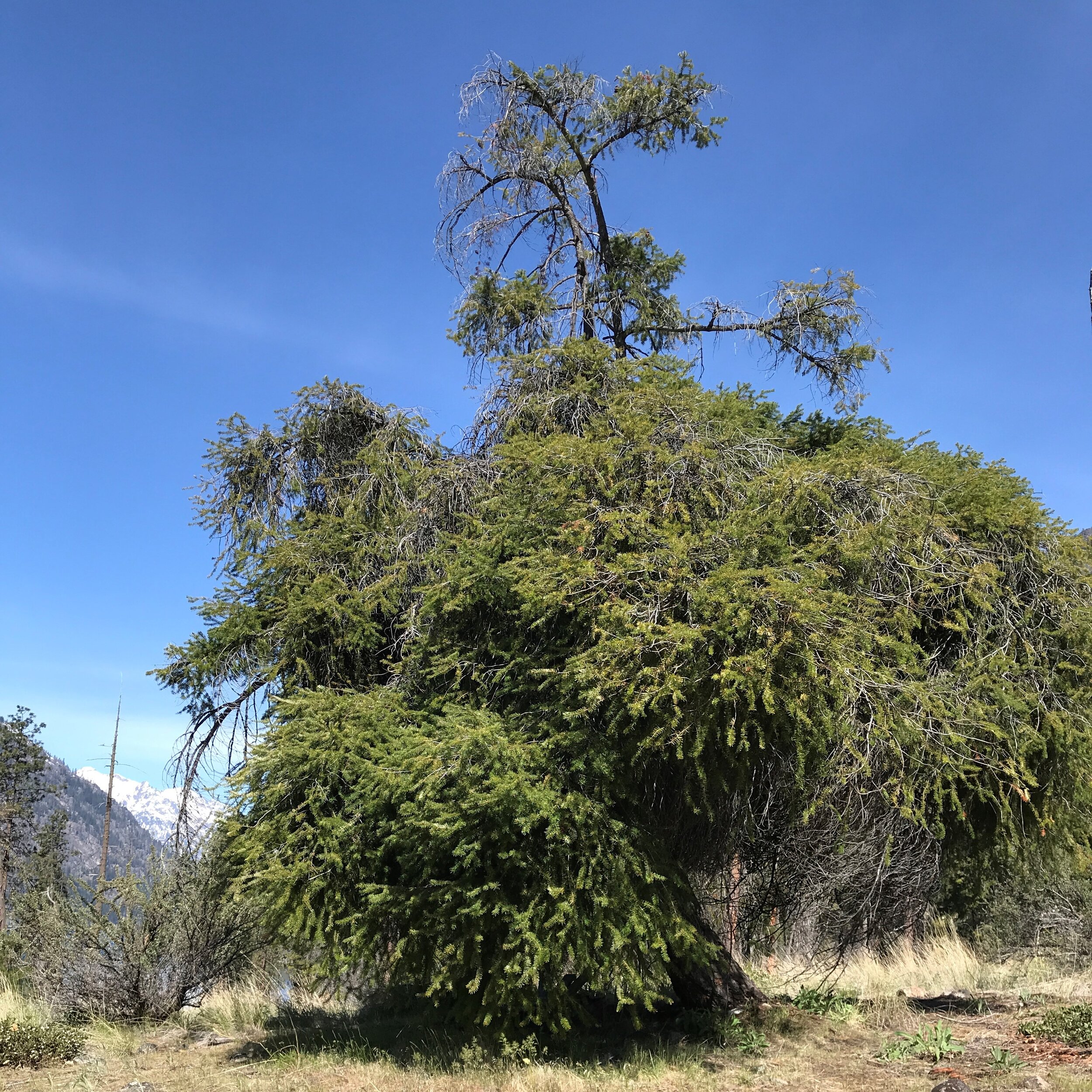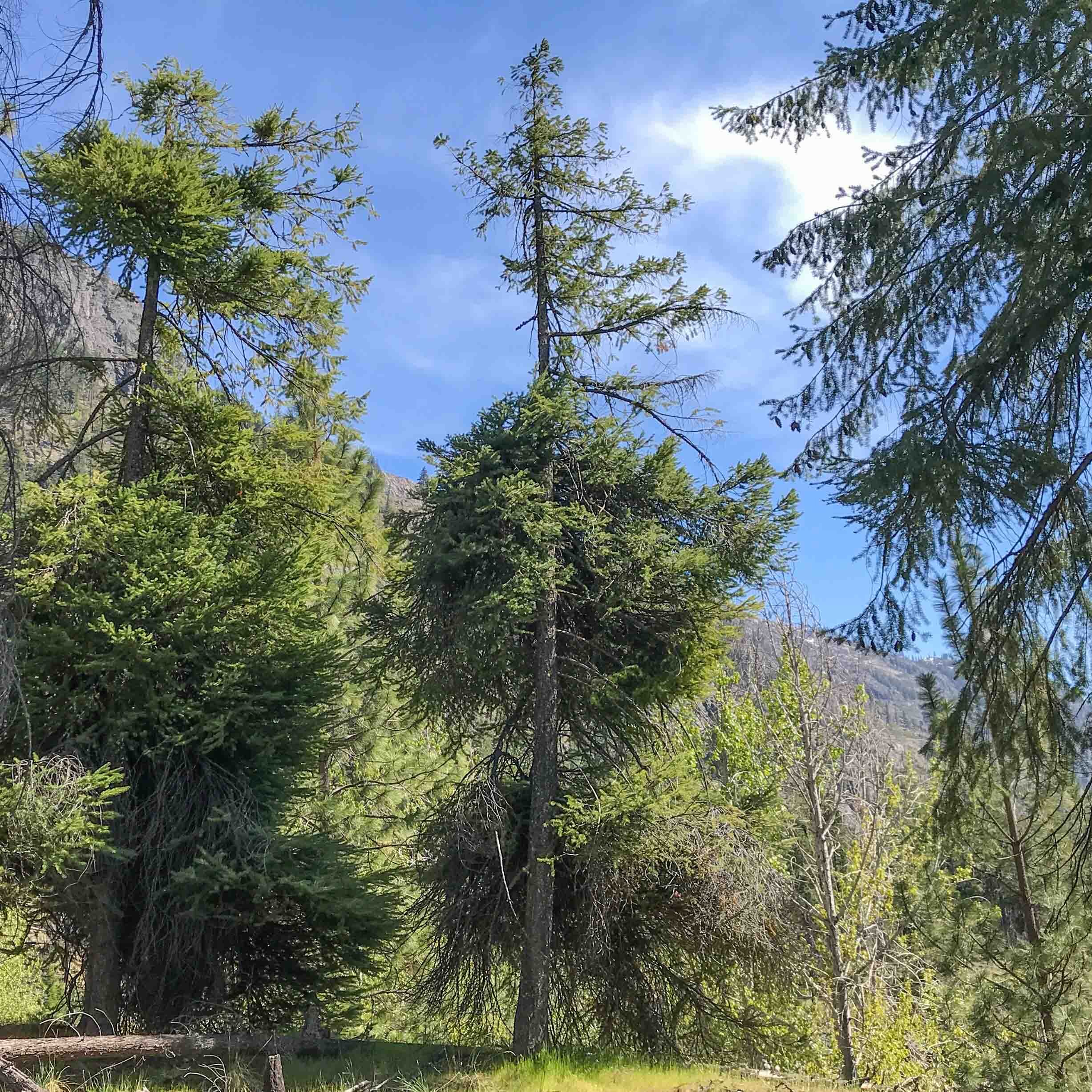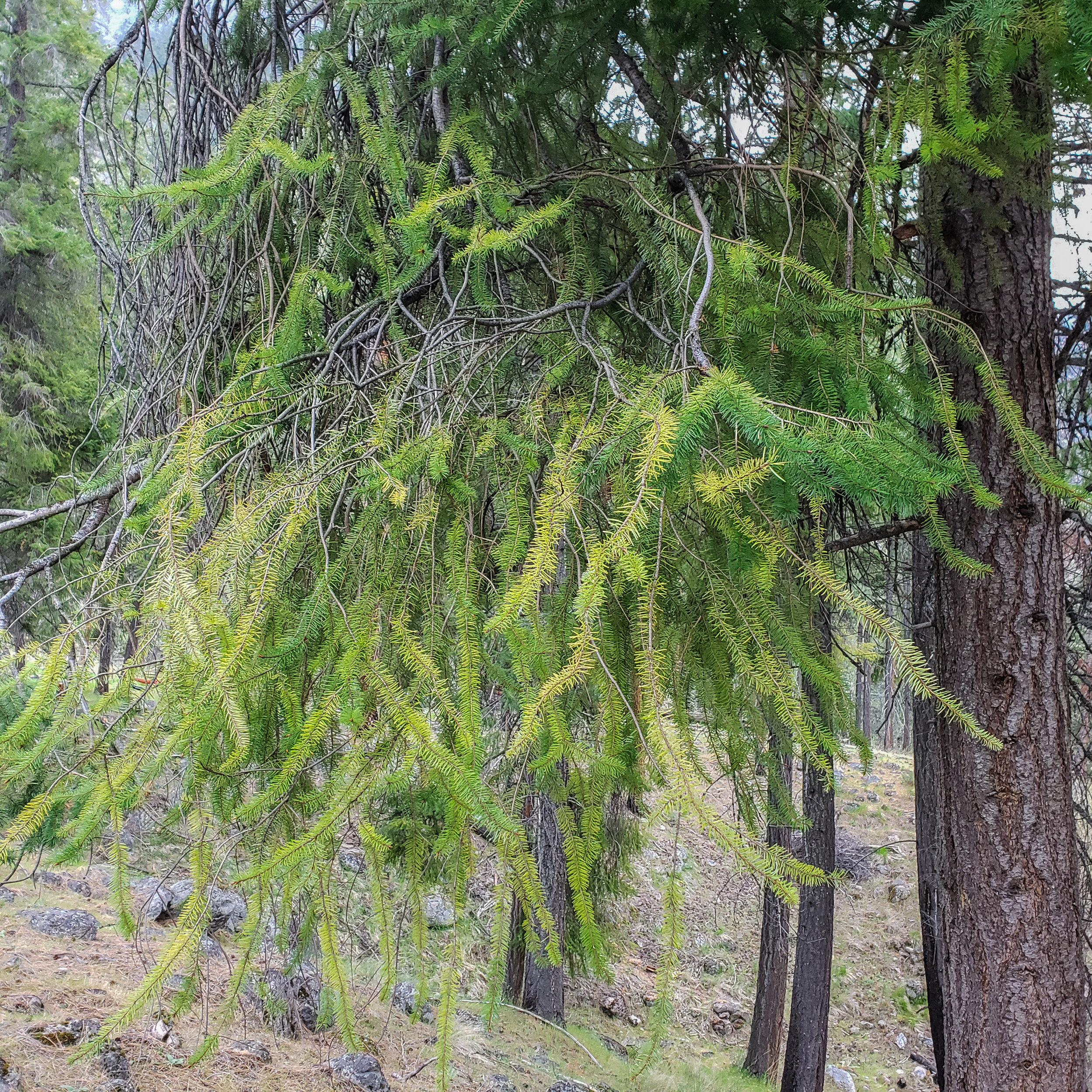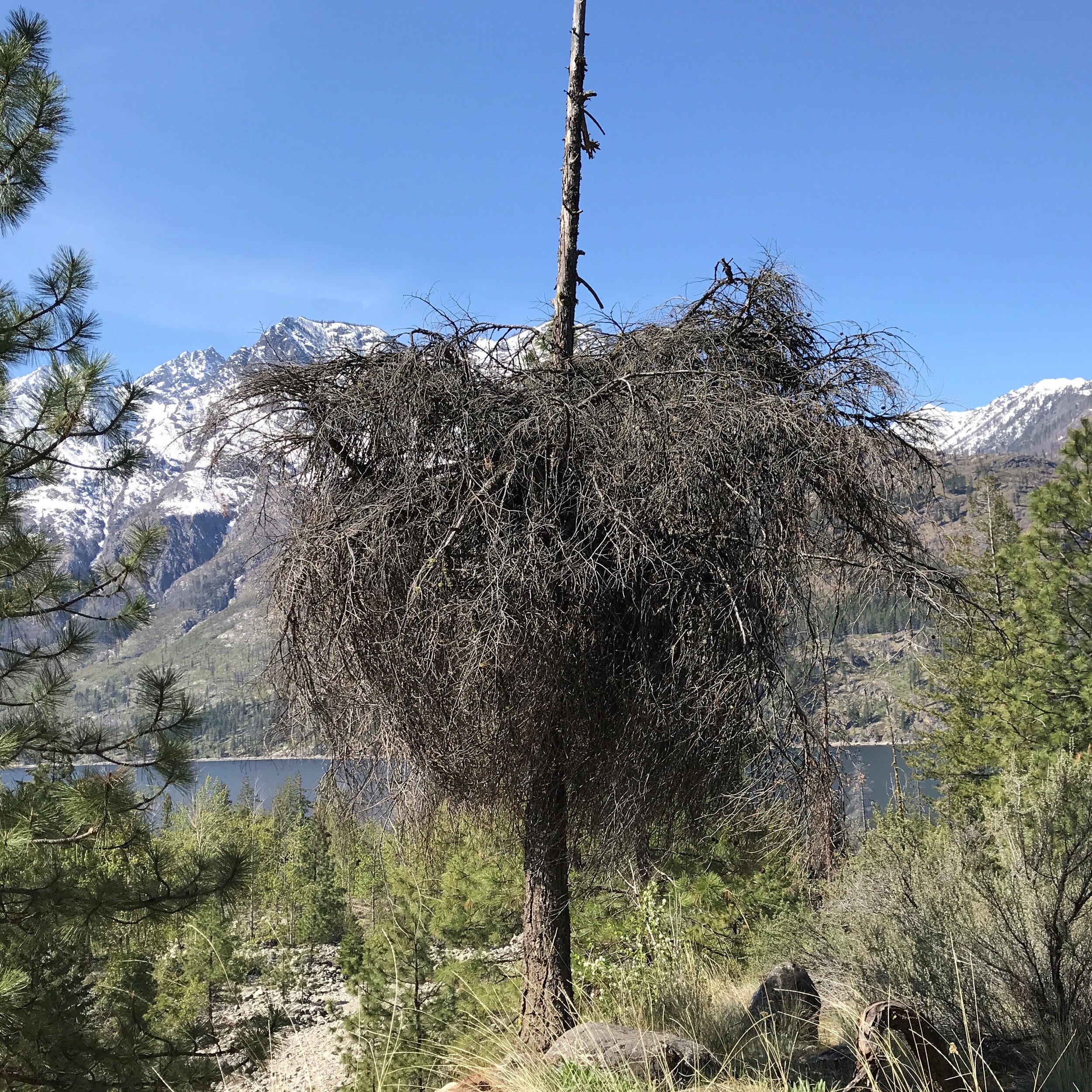Recently, I was lucky enough to spend a whole week at Lake Chelan as part of a WTA volunteer trail crew. We camped on the east lakeshore and worked in the Lake Chelan-Sawtooth Wilderness.
Many Douglas-firs in the area are badly afflicted with a deformity: The trees’ lower halves are bursting with crazily dense foliage. This growth pattern is called “witch’s broom.”
A National Forest ranger told me this is Douglas-fir dwarf mistletoe. I looked it up after returning home.
The Forest Service writes that Douglas-fir dwarf mistletoe is a “small, inconspicuous, seed-bearing parasitic plant” that is destructive to Douglas-firs. Read here.
This parasitic plant infects tree branches. It sends root-like strands into a branch’s bark and wood. These strands suck up sap from the host.
Douglas-fir dwarf mistletoe produces sticky seeds that shoot upward and outward. They spread by sticking to other foliage on the same tree or nearby trees.
At Lake Chelan, it appeared to me that branches on infected trees become (i) long, (ii) thin, (iii) droopy, and (iv) curly. Many of the needles are yellow.
Douglas-fir dwarf mistletoe slowly weakens a tree by robbing it of nutrients and water. “Heavily infested trees usually die within 10 to 15 years …” Or, it can make a tree susceptible to other pests or pathogens.
Ultimately, this is what happens:
What great tinder, waiting for the next wildfire!




